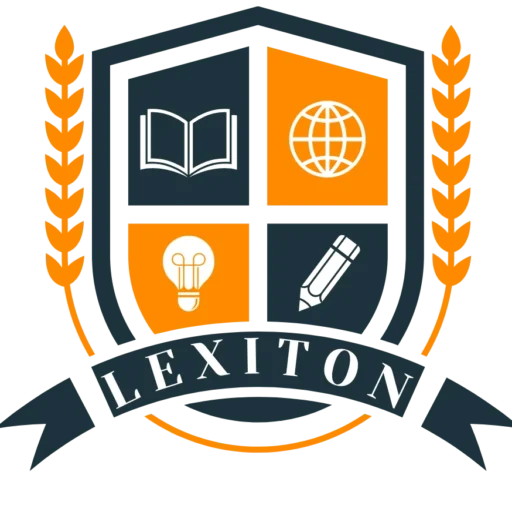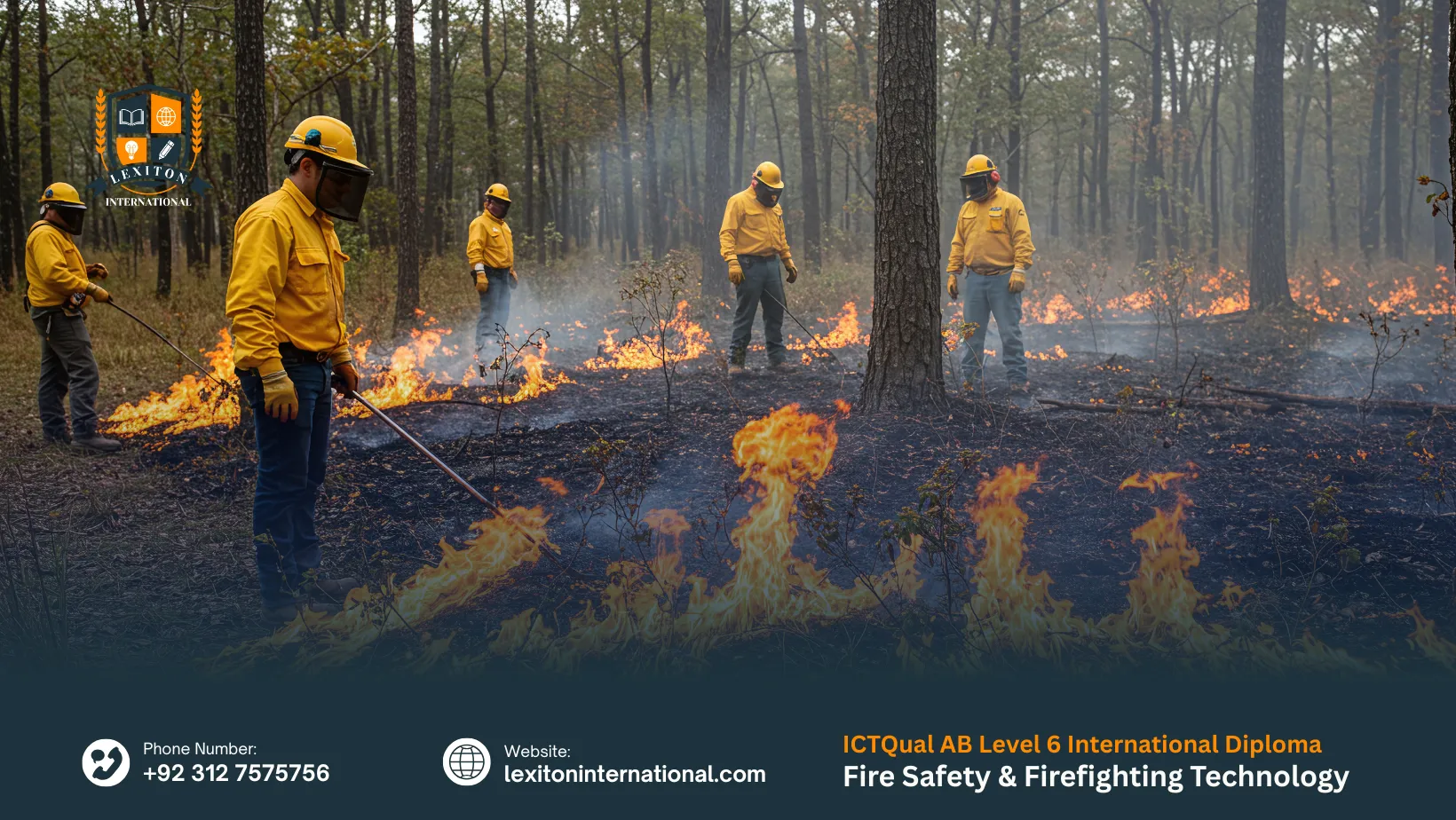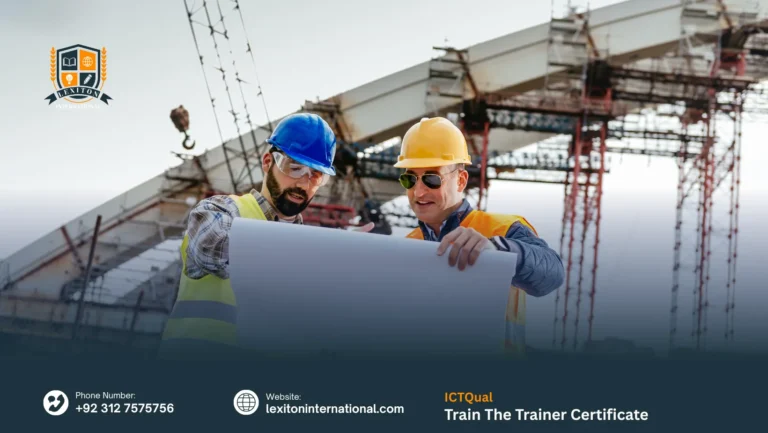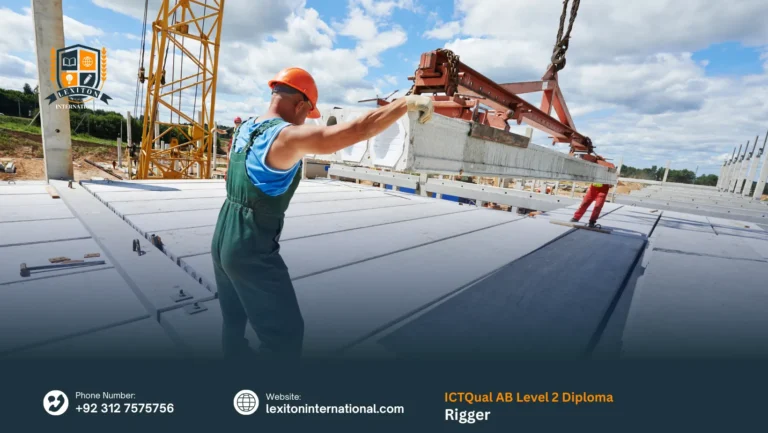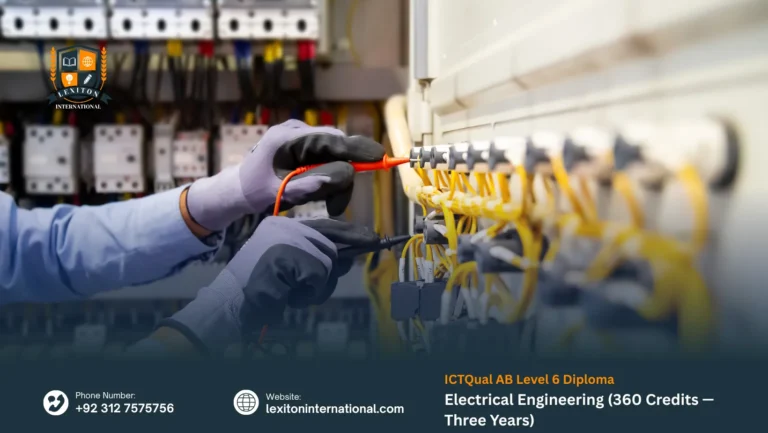The ICTQual AB Level 6 International Diploma in Fire Safety & Firefighting Technology is a comprehensive three-year, 360-credit program designed for individuals aiming to build or advance careers in fire safety, emergency response, and risk management. This internationally recognized qualification equips learners with advanced theoretical knowledge and practical skills essential for effective fire prevention, protection, and firefighting operations across diverse environments.
Throughout the program, students explore core subjects such as fire science, fire behavior analysis, emergency response strategies, risk assessment, and fire safety legislation. The curriculum also integrates modern firefighting technologies and hands-on training in fire prevention planning, enabling learners to respond confidently to complex emergency scenarios. Whether entering the field or seeking professional growth, participants gain a strong foundation in both technical and strategic aspects of fire safety.
Graduates of this diploma are well-prepared for roles in fire services, industrial safety departments, emergency planning units, and consultancy firms. The qualification also serves as a stepping stone to higher academic pursuits or specialized certifications in occupational safety, disaster management, and public safety leadership. With its global relevance and practical focus, the program empowers professionals to contribute meaningfully to safer communities and resilient infrastructures.
The ICTQual AB Level 6 International Diploma in Fire Safety & Firefighting Technology is designed for learners who wish to pursue advanced technical knowledge and professional competence in fire prevention, emergency response, and firefighting operations. To ensure participants gain the maximum benefit from this three-year, 360-credit programme, certain academic, physical, and language requirements are recommended.
- Age Requirement: Learners should ideally be 18 years or older, as the course involves physical training, emergency scenario simulations, and decision-making under pressure in high-risk environments.
- Educational Background: Applicants should have a Level 5 qualification or equivalent in fire safety, civil defense, engineering, or occupational health and safety. Candidates with a diploma or relevant certification in emergency services or industrial safety are also eligible.
- Work Experience: Relevant experience in firefighting, safety inspection, or emergency response is advantageous but not mandatory. Practical exposure to fire drills, hazard control, or rescue operations can enhance understanding of course content.
- English Language Proficiency: Learners should have a good command of spoken and written English to comprehend technical terminology, follow safety protocols, and complete assessments effectively.
- Professional Interest in Fire Safety & Emergency Response: Participants should have a strong interest in pursuing a career in fire services, industrial safety, or emergency planning. A commitment to public safety, teamwork, and continuous learning is essential.
- Commitment to Long-Term Study: As this is a three-year programme, candidates should be prepared for a structured learning schedule that includes theoretical modules, practical training, and continuous assessments aligned with international fire safety standards.
This diploma is ideal for individuals who aspire to become skilled, courageous, and globally competent professionals in fire safety and firefighting technology.
Mandatory Units
This qualification, the ICTQual AB Level 6 International Diploma in Fire Safety & Firefighting Technology, consists of 36 mandatory units.
Year 1 – Foundation in Fire Safety & Firefighting Technology
Year 2 – Intermediate Fire Safety & Firefighting Technology
Year 3 – Advanced Fire Safety & Firefighting Technology
Learning Outcomes for the ICTQual AB Level 6 International Diploma in Fire Safety & Firefighting Technology:
Year 1 – Foundation in Fire Safety & Firefighting Technology
Principles of Fire Science and Combustion
- Understand the chemistry and physics of fire
- Analyse fire behaviour under various conditions
- Apply fire science to safety measures
Introduction to Fire Safety Management
- Learn fire safety planning fundamentals
- Understand operational roles and responsibilities
- Implement basic workplace safety strategies
Fire Dynamics and Behaviour
- Examine fire growth and heat transfer
- Analyse factors affecting fire intensity
- Apply dynamics knowledge to prevention
Fire Prevention and Hazard Identification
- Identify common industrial and commercial fire hazards
- Implement preventive strategies
- Conduct basic hazard assessments
Basics of Firefighting Equipment
- Understand firefighting tools and systems
- Apply equipment knowledge in training
- Ensure maintenance and readiness
Health, Safety, and Environmental Awareness
- Learn health and safety principles
- Understand environmental impacts of fire
- Apply safe practices in operations
Fire Risk Assessment Fundamentals
- Conduct basic fire risk assessments
- Identify hazards and recommend controls
- Prepare foundational reports
Emergency Response Planning
- Develop fire incident response strategies
- Plan evacuations and allocate resources
- Coordinate initial emergency efforts
Laboratory Techniques in Fire Safety
- Conduct fire behaviour experiments
- Record and interpret data
- Apply findings to safety solutions
Technical Report Writing
- Develop professional reporting skills
- Present analysis and recommendations
- Use proper formatting and referencing
Introduction to Fire Safety Regulations and Standards
- Understand local and international regulations
- Apply standards for compliance
- Evaluate policies and procedures
Fire Simulation and Safety Software Basics
- Gain proficiency in simulation tools
- Analyse fire scenarios digitally
- Use results to improve planning
Year 2 – Intermediate Fire Safety & Firefighting Technology
Advanced Fire Risk Assessment Techniques
- Conduct in-depth assessments
- Use quantitative and qualitative methods
- Recommend advanced control measures
Fire Detection and Alarm Systems
- Understand detection technologies
- Analyse system reliability
- Implement warning strategies
Fire Suppression Systems and Methods
- Learn advanced suppression techniques
- Evaluate system effectiveness
- Apply methods safely
Industrial Fire Safety Management
- Manage safety programs in facilities
- Monitor compliance and performance
- Integrate planning with operations
Fire Safety in High-Risk Environments
- Identify hazards in high-risk sites
- Develop tailored strategies
- Implement mitigation plans
Emergency Evacuation Planning and Procedures
- Design evacuation plans
- Coordinate drills and exercises
- Ensure effective communication
Process Control and Safety Automation
- Integrate automated safety systems
- Analyse control reliability
- Optimise automation for prevention
Data Analysis and Fire Incident Investigation
- Analyse incident data
- Prepare investigation reports
- Apply findings to prevention
Project Planning and Technical Communication
- Plan and manage safety projects
- Communicate technical details
- Apply project management principles
Quality Control and Assurance in Fire Safety
- Monitor safety systems
- Implement quality assurance techniques
- Conduct audits and inspections
Advanced Laboratory Experiments in Fire Safety
- Perform complex simulations
- Validate fire safety models
- Apply findings to real scenarios
Fire Safety Compliance and Regulatory Standards
- Interpret advanced regulations
- Ensure operational compliance
- Maintain regulatory adherence
Year 3 – Advanced Fire Safety & Firefighting Technology
Advanced Firefighting Techniques and Strategies
- Master suppression methods
- Apply tactical decision-making
- Integrate dynamics with practice
Fire Safety Project Management
- Lead large-scale projects
- Coordinate teams and resources
- Evaluate outcomes and improve
Fire Behaviour Modelling and Simulation
- Use modelling to predict fire spread
- Analyse simulation results
- Optimise safety strategies
Hazardous Materials and Industrial Fire Protection
- Identify hazardous material risks
- Implement specialised protection systems
- Apply emergency response techniques
Emergency Response Leadership and Coordination
- Lead emergency teams
- Develop coordination protocols
- Improve response strategies
Risk Assessment and Safety Decision-Making
- Conduct comprehensive assessments
- Use analytical frameworks
- Recommend strategic safety measures
Fire Safety in Large-Scale Facilities and Complex Sites
- Manage safety in large facilities
- Develop operational plans
- Implement monitoring strategies
Advanced Laboratory Techniques and Field Testing
- Conduct advanced experiments
- Validate systems and protocols
- Analyse results for optimisation
Supply Chain and Logistics in Fire Safety Operations
- Understand equipment logistics
- Optimise emergency preparedness
- Integrate supply chain with safety
Capstone Project in Fire Safety & Firefighting Technology
- Complete a real-world safety project
- Integrate theoretical and practical knowledge
- Present findings professionally
Professional Development and Leadership in Safety Management
- Develop leadership and communication skills
- Prepare for senior safety roles
- Apply strategic planning
Strategic Decision-Making in Fire Safety and Emergency Operations
- Make high-level safety decisions
- Evaluate risks and resources
- Implement long-term safety policies
This diploma is designed for individuals who are passionate about protecting lives and property through advanced fire safety and emergency response strategies. Whether you’re entering the field or seeking to elevate your professional standing, the program offers the technical knowledge and practical skills needed to thrive in high-stakes environments.
Aspiring Firefighters
- Individuals seeking a structured pathway into professional firefighting
- Interested in learning fire behavior, suppression techniques, and rescue operations
- Committed to physical training and emergency readiness
- Looking to join municipal, industrial, or airport fire services
- Motivated by public service and community protection
Safety Officers and Inspectors
- Professionals responsible for workplace safety and fire prevention
- Interested in understanding fire codes, hazard assessments, and safety audits
- Work in sectors such as manufacturing, construction, or oil and gas
- Aim to improve compliance with national and international fire safety standards
- Looking to expand their qualifications for career advancement
Emergency Response Personnel
- Members of civil defense, disaster management, or paramedic teams
- Require cross-disciplinary knowledge in fire safety and emergency coordination
- Engage in crisis planning, evacuation procedures, and incident command
- Seek to enhance their effectiveness in multi-agency response scenarios
- Interested in leadership roles during emergencies
Military and Security Professionals
- Personnel involved in base safety, explosive risk management, or fire control
- Require specialized training in fire prevention and emergency protocols
- Work in high-risk environments where rapid response is critical
- Looking to transition into civilian fire safety roles post-service
- Aim to integrate fire safety into broader security operations
Engineering and Technical Staff
- Individuals working in building design, infrastructure, or industrial systems
- Need to understand fire dynamics, suppression systems, and safety integration
- Collaborate with architects, safety consultants, and regulatory bodies
- Interested in applying fire safety principles to technical projects
- Seek to meet compliance standards in construction and facility management
Whether you’re preparing for frontline firefighting, safety management, or emergency coordination, this diploma equips you with the expertise to lead, respond, and protect. It’s the ideal qualification for those ready to make a lasting impact in fire safety and emergency preparedness.
Completing the ICTQual AB Level 6 International Diploma in Fire Safety & Firefighting Technology opens the door to a wide range of professional and academic opportunities. Graduates are equipped with the technical expertise, leadership skills, and global perspective needed to advance in the dynamic fields of fire safety, emergency response, and risk management.
Progression to Advanced Academic Qualifications
- Enroll in postgraduate programs such as MSc in Fire Safety Engineering or Disaster Management
- Pursue specialized diplomas in Occupational Health and Safety or Environmental Risk Assessment
- Engage in research and development in fire science and emergency planning
- Qualify for academic roles in training institutions or universities
- Contribute to policy development and fire safety education
Career Advancement in Fire and Rescue Services
- Progress to senior roles such as Fire Officer, Station Commander, or Fire Safety Manager
- Lead emergency response teams in municipal, industrial, or airport fire services
- Oversee training, compliance, and operational planning within fire departments
- Specialize in hazardous materials response or technical rescue operations
- Participate in international firefighting and disaster relief missions
Opportunities in Industrial and Corporate Safety
- Work as a Fire Safety Consultant or Risk Assessor for large-scale industries
- Manage fire safety systems in oil & gas, manufacturing, or construction sectors
- Conduct audits and develop fire prevention strategies for high-risk facilities
- Collaborate with engineering teams on fire protection system design
- Ensure compliance with national and international safety regulations
Pathways into Government and Regulatory Bodies
- Join civil defense, emergency management agencies, or safety inspectorates
- Contribute to the development and enforcement of fire safety legislation
- Participate in national disaster preparedness and response planning
- Serve as a technical advisor for public safety initiatives
- Influence fire safety standards and regulatory frameworks
Entrepreneurship and Independent Consultancy
- Establish a fire safety training center or consultancy firm
- Offer services in fire risk assessment, evacuation planning, and compliance audits
- Develop customized safety programs for schools, hospitals, and commercial buildings
- Deliver workshops and seminars on fire prevention and emergency readiness
- Build a reputation as a trusted expert in fire safety and firefighting technology
Whether your goal is to lead emergency operations, shape safety policy, or consult for high-risk industries, this diploma provides the foundation for a meaningful and impactful career. It empowers graduates to become leaders in fire safety, equipped to protect lives, property, and the future of resilient communities.
Curious About This Course?
